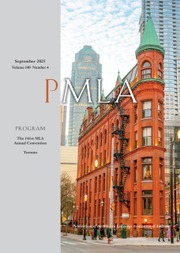Article contents
From Animal to Animality Studies
Published online by Cambridge University Press: 23 October 2020
Extract
When Jack London's human characters interact with dogs and wolves in texts such as the call of the wild (1903) and White Fang (1906), erotic fireworks often light up the wild. The love between the dog Buck and his human partner, John Thornton, in The Call of the Wild is characterized as “[l]ove, genuine passionate love. … love that was feverish and burning, that was adoration, that was madness” (59–60). In White Fang, the half wolf of the title experiences a love for Weedon Scott that “manifested itself to [White Fang] as a void in his being—a hungry, aching, yearning void that clamored to be filled. It was a pain and an unrest; and it received easement only by the touch of the new god's presence” (244). Instead of reading these passionate nonhuman characters as “real” animals, literary and cultural critics often read them as “men in furs,” in Mark Seltzer's memorable phrase, leading to interesting and important discussions of, for example, homoerotic interactions between men.
- Type
- Theories and Methodologies
- Information
- Copyright
- Copyright © Modern Language Association of America, 2009
References
Works Cited
- 15
- Cited by


